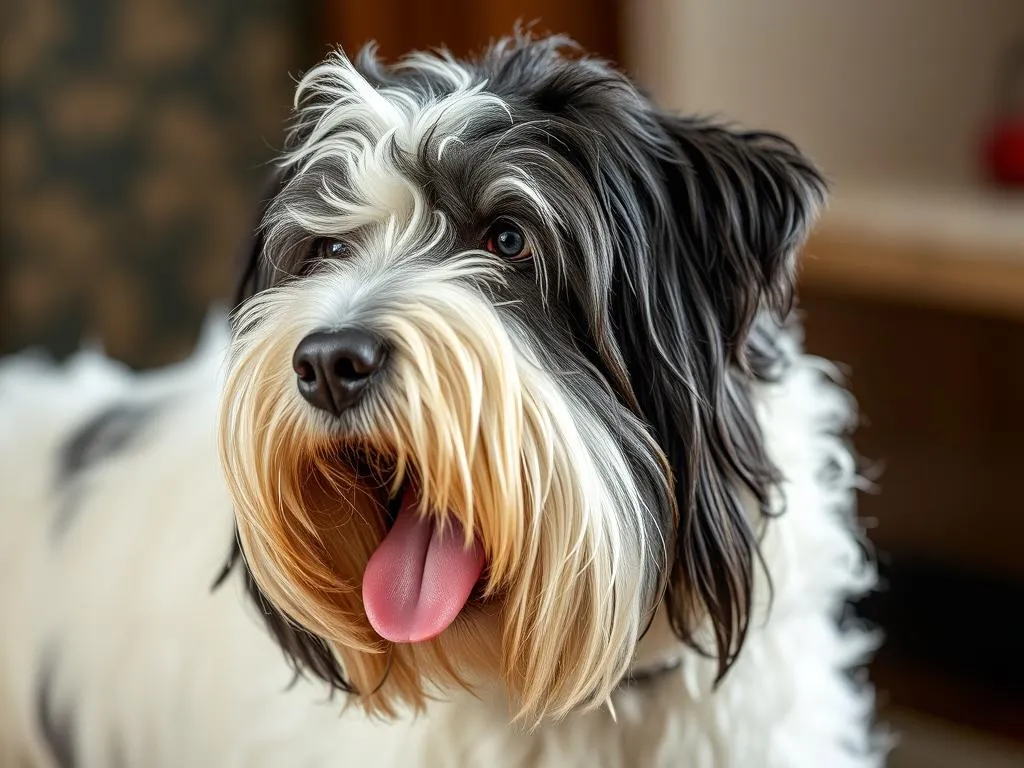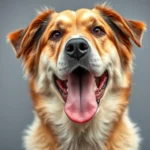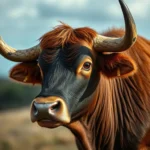
Understanding the diverse world of dog breeds is crucial for anyone considering adding a canine companion to their family. Each breed comes with its unique set of characteristics, requirements, and traits that make it suitable for different lifestyles. Among these breeds, the Old English Sheepdog (OES) stands out due to its distinctive appearance and charming personality.
History of the Old English Sheepdog
Origins
The Old English Sheepdog is a breed with a rich history that dates back several centuries. Originating in England, this breed was primarily developed for herding sheep and cattle. The OES was known as a “bobtail,” a reference to its naturally short tail, which was a practical trait for dogs that worked in the field.
Geographically, the breed hails from the southern regions of England, where shepherds needed a reliable dog to manage their flocks. The OES’s herding instinct and intelligence made it an invaluable asset on farms, contributing to its popularity among agricultural communities.
Evolution
Over the years, the Old English Sheepdog has seen significant changes in its appearance and purpose. While it was initially bred for herding, today the breed is more commonly kept as a companion animal. The OES has been influenced by various other breeds, including the Bearded Collie and the Scottish Sheepdog, which have contributed to its distinctive features and temperament.
Recognition by kennel clubs, such as The Kennel Club in the UK and the American Kennel Club (AKC), has played a vital role in the breed’s preservation and promotion. The OES was officially recognized by the AKC in 1914, further solidifying its status as a beloved breed in the canine community.
Physical Characteristics
Size and Weight
The Old English Sheepdog is a large breed, typically standing between 20 to 24 inches tall at the shoulder. Adult males usually weigh between 60 to 100 pounds, while females tend to be slightly smaller, weighing around 50 to 80 pounds. This substantial size, combined with their thick, shaggy coat, gives them a commanding presence.
When compared to other similar breeds, such as the Bernese Mountain Dog or the Newfoundland, the OES is generally more agile and has a unique, boxy build that distinguishes it from its counterparts.
Coat and Color
The coat of the Old English Sheepdog is one of its most striking features. Its long, shaggy fur is both dense and water-resistant, providing protection in various weather conditions. The coat typically requires regular grooming to prevent matting and tangles.
Common color patterns for the OES include gray and white, blue and white, and black and white. Grooming needs are significant; owners should plan for frequent brushing—ideally, several times a week—to maintain the coat’s health and cleanliness.
Distinctive Features
The Old English Sheepdog has several distinctive physical traits. Its broad head, rounded eyes, and large, floppy ears contribute to its endearing appearance. The breed’s movement is characterized by a unique, flowing gait that showcases its agility and grace.
Temperament and Personality
General Behavior
The Old English Sheepdog is known for its friendly and easygoing temperament. They are affectionate and loyal, making them excellent companions for families and individuals alike. However, they do have a strong herding instinct, which can manifest in behaviors like nipping or chasing, particularly with smaller animals.
Socialization is crucial for the OES, as they can be reserved around strangers. Early exposure to various environments, people, and other pets is essential to help them develop into well-rounded adults.
Interaction with Families and Children
As a family pet, the Old English Sheepdog excels in creating bonds with children. Their playful nature and patience make them suitable for households with kids. They often enjoy engaging in games and can be quite protective of their family members.
The OES typically gets along well with other pets, especially if raised together. Their gentle disposition allows them to coexist comfortably with cats and other dog breeds.
Training and Intelligence
Intelligence is a hallmark of the Old English Sheepdog, making them relatively easy to train. They respond well to positive reinforcement methods, such as treats and praise. Consistent training sessions and early obedience training are recommended to channel their energy and intelligence effectively.
However, some OES may exhibit a stubborn streak, so patience and creativity in training are essential. Engaging them in mentally stimulating activities, such as puzzle toys or agility courses, can also enhance their learning experience.
Health and Lifespan
Common Health Issues
Like many breeds, the Old English Sheepdog is susceptible to certain health issues. Some common concerns include hip dysplasia, progressive retinal atrophy, and cataracts. Regular veterinary check-ups are vital for early detection and management of these conditions.
Maintaining a healthy weight and providing a balanced diet can significantly contribute to the overall health of the OES, reducing the risk of obesity-related health problems.
Lifespan and Care
The average lifespan of the Old English Sheepdog is around 10 to 12 years. To promote longevity, owners should prioritize routine veterinary care, a nutritious diet, and regular exercise. Proactive health care, including vaccinations and parasite prevention, will help keep your OES healthy and happy.
Care Requirements
Grooming Needs
Grooming is one of the most significant care aspects for an Old English Sheepdog. Owners should expect to groom their OES at least once a week, with more frequent sessions during shedding seasons. Essential tools include a slicker brush, comb, and high-quality dog shampoo.
Regular grooming not only keeps their coat in good condition but also provides an opportunity for owners to check for any skin issues or parasites.
Exercise Needs
The Old English Sheepdog requires regular exercise to maintain a healthy weight and mental stimulation. Daily walks, playtime in a secure yard, and engaging activities like fetch or swimming are ideal for keeping them active.
An OES typically enjoys being part of family activities, and incorporating them into outdoor adventures can strengthen the bond between dog and owner.
Diet and Nutrition
A well-balanced diet is crucial for the Old English Sheepdog’s health. High-quality dog food, tailored to their age, size, and activity level, is recommended. Owners should be cautious about overfeeding, as OES can be prone to obesity.
It’s essential to consult with a veterinarian regarding specific dietary needs and any necessary supplements to support overall health.
Living Arrangements and Compatibility
Ideal Living Environment
The Old English Sheepdog thrives in homes with ample space to roam and play. While they can adapt to apartment living, access to a yard is ideal for their exercise needs. A home with a secure outdoor area allows the OES to explore and engage in natural behaviors.
Compatibility with Other Pets
In general, the Old English Sheepdog is known for its friendly nature and can get along well with other pets. Socialization is key to ensuring they interact positively with other dogs and animals. Introducing an OES to existing pets should be done gradually, allowing time for adjustment.
Pros and Cons of Owning an Old English Sheepdog
Advantages
Owning an Old English Sheepdog offers many benefits. Their loyalty and affectionate nature make them excellent companions. They bond well with families and can provide a sense of security due to their protective instincts. Additionally, their playful demeanor brings joy and entertainment to any household.
Disadvantages
However, there are challenges to consider. The grooming needs of the OES can be time-consuming and require a commitment. Their exercise requirements also mean that owners must be prepared to dedicate time for daily walks and play. Additionally, first-time dog owners might find the training and socialization needs of the OES to be demanding.
Conclusion
The Old English Sheepdog is a remarkable breed with unique characteristics that make it a desirable companion for many families. Their friendly disposition, intelligence, and striking appearance contribute to their popularity. However, potential owners should carefully consider their lifestyle and commitment to grooming, exercise, and training before welcoming an OES into their home.
Owning an Old English Sheepdog can be a fulfilling experience, bringing love and joy to your life while also requiring a significant investment in care and attention.









